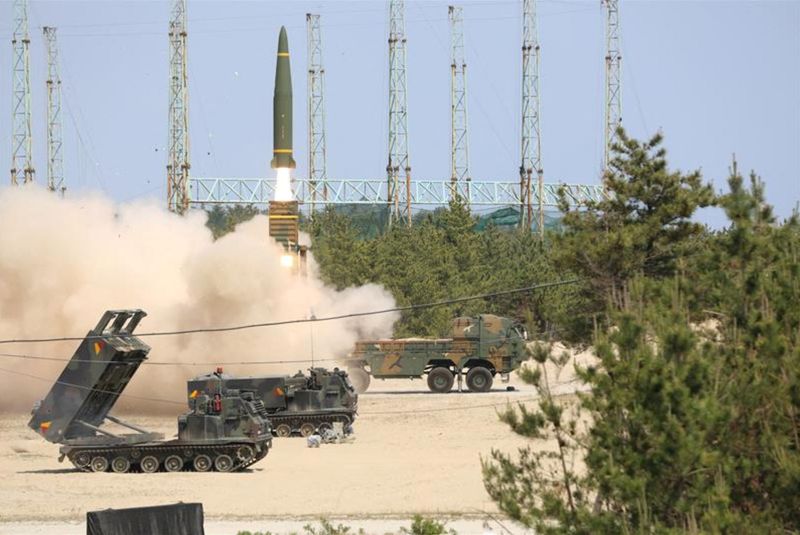By Jack Kim and Soo-hyang Choi
SEOUL (Reuters) -South Korea and the United States said they fired eight surface-to-surface missiles early on Monday off South Korea's east coast, responding to a barrage of short-range ballistic missiles launched by North Korea on Sunday.
The action is a demonstration of "the capability and readiness to carry out precision strikes" against the source of North Korea's missile launches or the command and support centres, South Korea's Yonhap news agency cited the South Korean military as saying.
South Korean President Yoon Suk-yeol, who took office last month, has vowed to take a tougher line against the North and agreed with U.S. President Joe Biden at a May summit in Seoul to upgrade joint military drills and their combined deterrence posture.
North Korea has conducted a flurry of missile launches this year and Yoon said its missile and nuclear weapons programmes have reached a level at which they pose a threat to regional and world peace.
The South “will continue to build fundamental and practical security capabilities and deter the North’s nuclear and missile threats,” Yoon said at an event for South Korea's Memorial Day.
The militaries of South Korea and the United States fired eight surface-to-surface missiles over about 10 minutes starting at 4:45 a.m. on Monday (1945 GMT Sunday) in response to the eight missiles fired by the North on Sunday, Yonhap reported.
An official from South Korea's Defence Ministry confirmed eight Army Tactical Missile Systems (ATACMS) had been fired.
U.S. Indo-Pacific Command said the exercise included one U.S. Army missile and seven from South Korea.
"The ROK-U.S. Alliance remains committed to peace and prosperity on the Korean Peninsula and throughout the Indo-Pacific," it said in a statement, using the initials of South Korea's official name.
RECIPROCAL EXERCISES
North Korea's short-range ballistic missiles, fired toward the sea off its east coast on Sunday, were probably its largest single test and came a day after South Korea and the United States ended joint military drills.
The South Korea-U.S. bilateral exercises involved an American aircraft carrier for the first time in more than four years.
Japan and the United States also conducted a joint military exercise on Sunday in response to the latest North Korea missile tests.
North Korea, which is several weeks into battling its first known outbreak of COVID-19, has criticised previous joint drills as an example of Washington's continued "hostile policies" toward Pyongyang, despite its talk of diplomacy.
Yonhap, citing an unidentified source, said the North's volley on Sunday was launched from four locations, including Sunan in the capital, Pyongyang.
Leif-Eric Easley, an international studies professor at Ewha University in Seoul said South Korea's current missile defences are insufficient against the expanding North Korean threat.
"This calls not only for further investments in hardware but also a more multilayered approach coordinated with Japan and diplomatic efforts with Beijing to reduce arms race dynamics with Pyongyang."
North Korea continued with its recent trend of not reporting on missile launches in state media, which some analysts have said is meant to show the tests are part of routine military drills.
Washington and Seoul officials also recently warned North Korea appeared ready to resume nuclear weapons tests for the first time since 2017.
Last month, North Korea fired three missiles, including one thought to be its largest ICBM, the Hwasong-17, after Biden ended an Asia trip where he agreed to new measures to deter the nuclear-armed state.

Joint South Korean and U.S. forces fired missiles in response to those tests too, which the two allies say are violations of U.N. Security Council resolutions.
Last month, the United States called for more U.N. sanctions on North Korea over its ballistic missile launches, but China and Russia vetoed the suggestion, publicly splitting the U.N. Security Council on North Korea for the first time since it started punishing it in 2006, when North Korea conducted its first nuclear test.